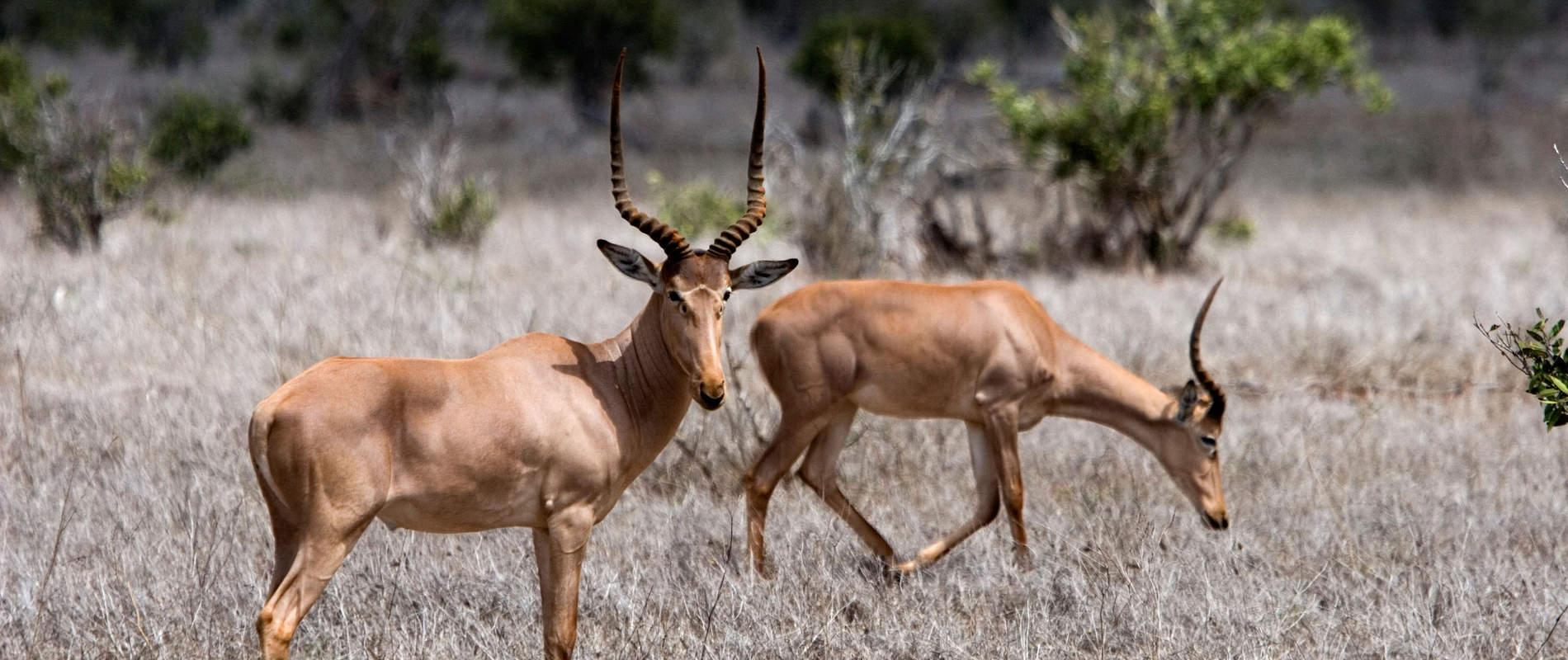The elephant's plight is well known, but there are many lesser known species in much greater peril.
The elephant's plight is well known, but there are many lesser known species in much greater peril. With less than 500 individuals left in the wild, the hirola is one of the most endangered mammals in the world.

In appearance they most closely resemble a Coke's hartebeest, however, their long horns set them apart, leading to the common description of them being a mix between a hartebeest and an impala. In fact, they are the last remaining species in their own genus, Beatragus.

Their natural range is a small strip of semi-arid rangeland along the Somali-Kenya border and although they once numbered around 14,000, their numbers were severely reduced in the 80s due to an outbreak of rinderpest. Since then, a host of other problems, mostly directly or indirectly caused by humans have conspired to decrease their numbers even further.

Habitat loss, and competition with livestock are arguably the greatest threats to hirola today, so although rinderpest has been eradicated, hirola have not been able to recover like other similar antelope. Instead, they have suffered massive encroachment by pastoralists, whose livestock come into direct competition with them for food. Their habitat has also changed.


Due to the elimination of elephant populations in the area due to poaching, there is nothing left to knock down trees to clear savannah, which has dramatically altered the ecosystem. With more tree cover the grassland has suffered and so too have hirola, which feed primarily on young grass shoots.

In addition to the natural population in northeastern Kenya, there is a small, stable population in Tsavo that originated in 1963, while David Sheldrick was warden of Tsavo East. At that time, 30 individuals were released from a much larger group that were originally translocated and kept in an enclosure to acclimatise to their new surroundings. It was, in fact, David who recognised that the Hirola were dying off due to the stress of captivity and ordered that they be released immediately. It turned out to be the right decision and the remaining individuals survived and multiplied. For a long time they were only occasionally seen, in small groups, and normally mixed with other antelope herds, but when a survey was conducted in 1995, they numbered 76. An additional translocation of 29 individuals took place in 1996, but by 2000 the population had returned to somewhere in the 70s and has remained there ever since.

The history of hirola is uncertain but their is hope, with efforts underway to protect the remaining Hirola in the North and with this satellite population in Tsavo living under the watchful eye of KWS and DSWT.

